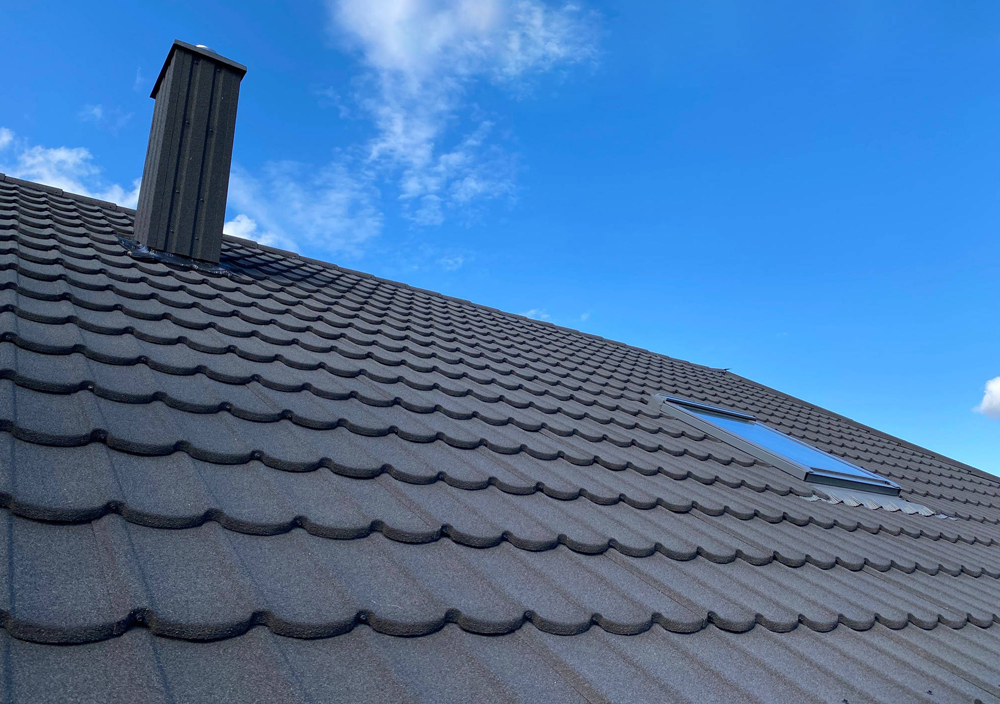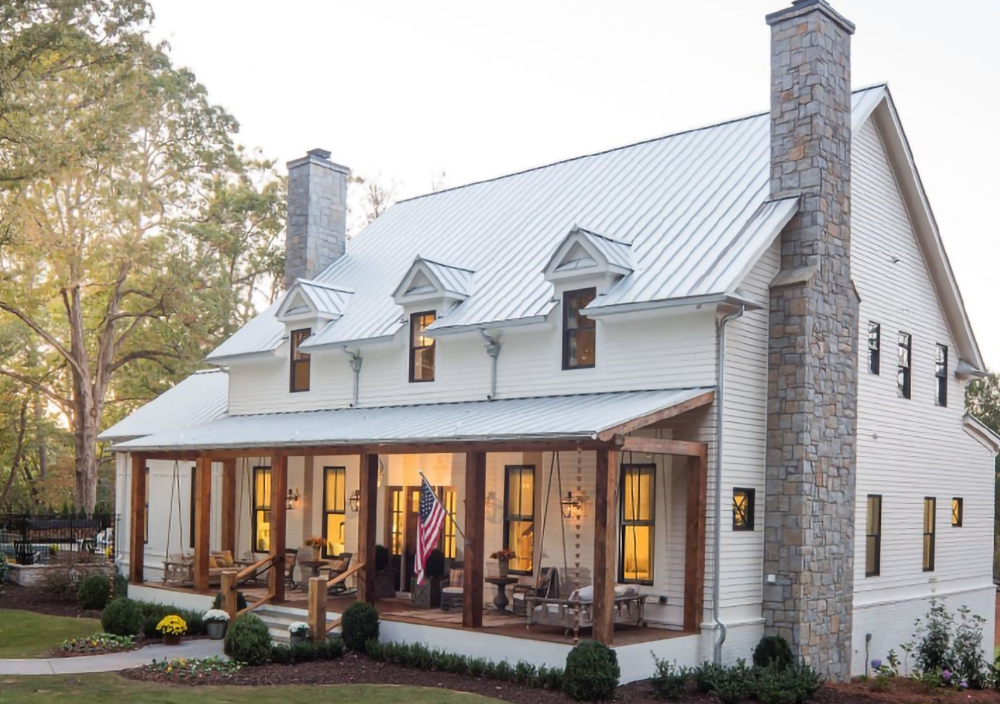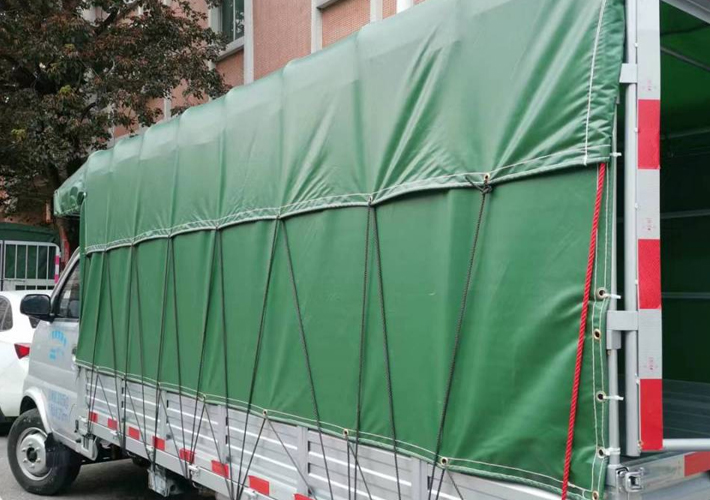Introduction
Stone-coated roof tiles have become a popular roofing option due to their durability, aesthetic appeal, and energy efficiency. Combining the natural beauty of stone with the strength of metal, these roof tiles are ideal for both residential and commercial buildings. In this article, we will explore the common types and sizes of stone-coated roof tiles, their features, and their applications.

1.What Are Stone-Coated Roof Tiles?
Stone-coated roof tiles are metal roofing tiles that have been coated with a layer of natural stone granules. These granules are bonded to a steel or aluminum base and provide the tiles with their distinctive texture and color. The stone coating enhances the durability, fire resistance, and UV protection of the roof, while also giving it a natural look that resembles traditional clay or slate tiles.
Benefits of Stone-Coated Roof Tiles:
- these tiles highly resistant to wind, rain, and hail.
- Aesthetic Appeal: The stone granules come in a variety of colors and textures, providing a wide range of design options.
- Energy Efficiency: These roof tiles reflect UV rays, helping to keep buildings cooler in hot climates and reduce energy consumption.
- Lightweight: Despite their strength, stone-coated roof tiles are relatively lightweight compared to traditional roofing materials like clay or concrete.
2.Common Types of Stone-Coated Roof Tiles
Stone-coated roof tiles come in various profiles and styles, each designed to suit different architectural preferences and functional requirements. Below are the most common types of stone-coated roof tiles:
2.1 Granulated Steel Roof Tiles
Granulated steel roof tiles are the most widely used type of stone-coated roof tiles. They are made from a steel base that is coated with natural stone granules to create a durable, weather-resistant surface. These tiles are commonly available in a wide range of profiles, including:
- Shingle-style: Resembling traditional asphalt shingles, these tiles are designed for easy installation and provide a sleek, modern look.
- Slate-style: These tiles mimic the appearance of natural slate, offering a sophisticated, classic aesthetic.
- Tile-style: Resembling traditional clay tiles, these tiles have a rounded profile and are often used in Mediterranean-style homes.
- Shake-style: This style mimics the appearance of wooden shakes, providing a rustic, textured look.
2.2 Concrete-based Stone-Coated Roof Tiles
Concrete-based stone-coated tiles use a concrete core instead of metal, with a layer of stone granules applied on top. These tiles offer similar benefits to granulated steel tiles, including durability and aesthetic appeal. Concrete-based stone-coated tiles tend to be thicker and heavier than their steel counterparts, making them suitable for areas with high wind or storm activity.
2.3 Aluminum-based Stone-Coated Roof Tiles
Aluminum-based stone-coated tiles are lighter than steel or concrete tiles, making them ideal for applications where weight is a concern. Aluminum tiles also offer superior resistance to corrosion and rust, making them an excellent choice for coastal regions or areas with high humidity.
3.Sizes of Stone-Coated Roof Tiles
The size of stone-coated roof tiles varies depending on the type, manufacturer, and the specific needs of the project. However, there are some general standards that most stone-coated roof tiles adhere to. Here are the most common sizes:
3.1 Standard Tile Sizes
- Width: 300mm to 400mm (12 to 16 inches)
- Length: 1,000mm to 1,200mm (39 to 47 inches)
These sizes are typical for roof tiles with a standard profile, such as shingle or tile-style roof tiles. The length and width of the tiles may vary slightly based on the manufacturer’s specifications, but these dimensions are common in the industry.
3.2 Large Format Tiles
Some manufacturers offer larger stone-coated roof tiles, which can be beneficial for covering more area quickly during installation. Large format tiles typically have the following dimensions:
- Width: 400mm to 500mm (16 to 20 inches)
- Length: 1,200mm to 1,500mm (47 to 59 inches)
These larger tiles reduce the number of tiles needed per square meter, which can speed up the installation process and reduce labor costs.
3.3 Custom Sizes
For specialized architectural projects, custom-sized stone-coated roof tiles may be required. These tiles can be manufactured to specific dimensions to suit unique roof designs, such as those with curved or non-standard pitches.

4.How to Choose the Right Size for Your Roof
Choosing the right size of stone-coated roof tiles depends on several factors:
- Roof Size: The size of your roof will dictate the number of tiles needed. Larger tiles cover more area, reducing the total number of tiles required, while smaller tiles may be more suitable for smaller, intricate roof designs.
- Roof Pitch: Steeper roof pitches may require smaller tiles to ensure proper coverage and prevent slipping during installation.
- Aesthetic Preferences: The size and shape of the tiles should complement the overall design of the building. Larger tiles may provide a more modern look, while smaller tiles may give a more traditional or detailed appearance.
5.Applications of Stone-Coated Roof Tiles
Stone-coated roof tiles are versatile and can be used in a wide variety of residential, commercial, and institutional applications. Some of the most common uses include:
5.1 Residential Roofing
Stone-coated roof tiles are often used in residential buildings, especially in areas prone to extreme weather conditions. Their durability and energy efficiency make them an ideal choice for homes in both hot and cold climates.
5.2 Commercial Roofing
Stone-coated roof tiles are increasingly being used in commercial buildings such as office complexes, schools, and retail stores. Their aesthetic versatility and long lifespan make them a cost-effective choice for large-scale commercial projects.
5.3 Institutional Roofing
Institutional buildings, including government buildings and religious structures, often opt for stone-coated roof tiles due to their combination of durability, security, and appearance.
6.Factors Influencing the Size and Type of Stone-Coated Roof Tiles
Several factors influence the choice of size and type of stone-coated roof tiles, including:
- Climate: Areas with extreme weather conditions (high winds, heavy rainfall, or snow) often require thicker and more durable tiles, such as concrete-based stone-coated tiles.
- Building Architecture: The design of the building can impact the choice of tile size and profile. For example, Mediterranean-style homes may favor tile-style stone-coated tiles, while modern homes may opt for sleek, shingle-style tiles.
- Cost: Larger tiles may be more cost-effective in terms of installation, as fewer tiles are needed to cover the roof. However, the overall cost will depend on the material (steel, concrete, or aluminum) and the manufacturer.

7.Conclusion
Stone-coated roof tiles offer a durable, attractive, and energy-efficient roofing solution for a wide range of applications. With various types and sizes available, these tiles can be customized to suit the specific needs of any building, whether residential, commercial, or institutional. When choosing stone-coated roof tiles, it is essential to consider factors such as roof size, pitch, aesthetic preferences, and the local climate. By selecting the right type and size, homeowners and builders can enjoy the long-lasting benefits of this innovative roofing material.
We are a roofing tile production factory in China. Contact us for more product information and price trends!




